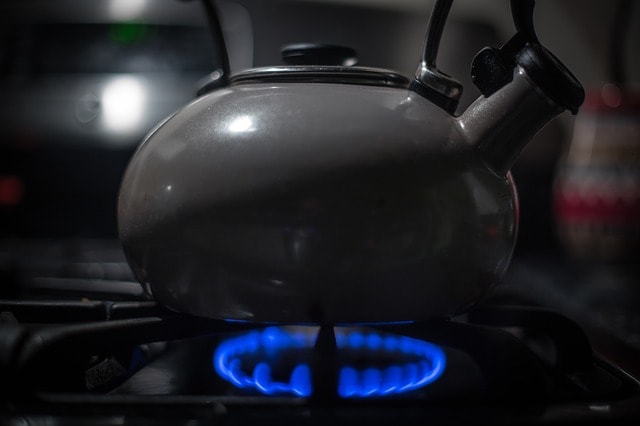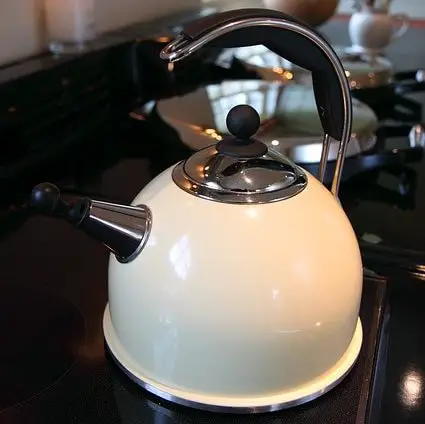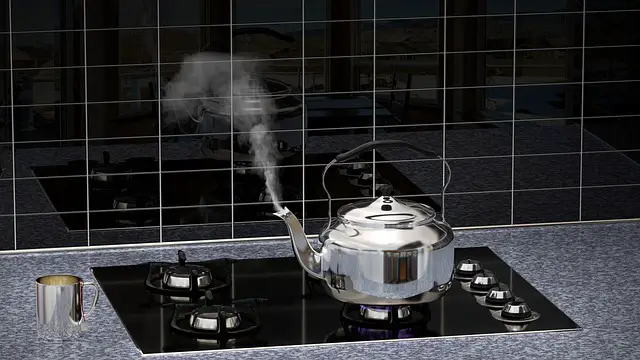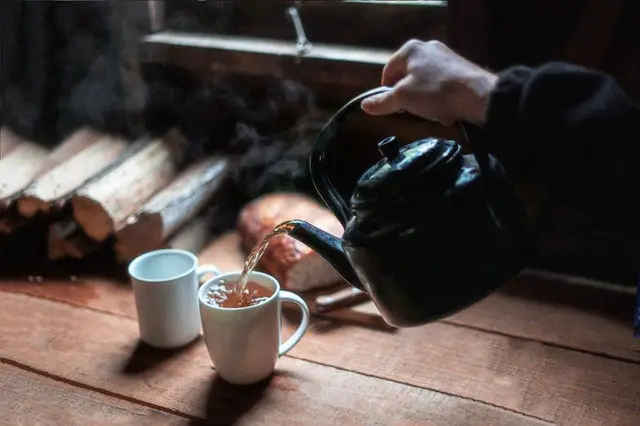
Now, you would imagine that using a tea kettle would be the easiest thing in the world. After all, it is pretty self-explanatory, right? Well, that’s what I thought so too.
Then, I found out that warming or boiling water is actually a rather important part of the tea-making process.
This completely changed the way that I looked at my kettle. So, I decided to figure out how to use a tea kettle, the proper way.
If you want to learn the key methods and ensure that your water (and tea) is warmed to perfection, just follow my guidelines below…
Contents
Stovetop Tea Kettle: this is the most common type of tea kettle on the market. As the name suggests, the kettle is placed on a stovetop. Once the boiling commences, the kettle will either whistle or issue steam from its spout.
Electric Kettle: another type of kettle that is becoming quite popular is the electric tea kettle. This appliance relies on an electric water heating element to warm the water. The most modern electric kettles are incredibly sophisticated and come with numerous features.
Related Article:
Style Over Substance? Identifying the Best Glass Tea Kettle
Filtered Water: with water, it is all about the pH – ideally, your water should have a pH around 7. This is why it is best to use filtered water. You can then reduce the risk of minerals or other substances altering the taste of the water and your tea.
As you can see from this section, there are two types of tea kettles available. Due to this, I’m going to show you the right way to use each and every type.
Let’s start with the most traditional way of warming up water.
You should always fill the kettle with fresh, cold water. Never use water that has been heated and then cooled.
To fill the kettle, remove the lid. Then, pour in the water through this opening.
Only ever fill as much as you will need immediately. When pouring in the water, avoid going above the lowest part of the spout.
Once you are done, replace the lid tightly.

You may be using either a gas stove or an electric stove.
In case you are using a gas stove, it is important to select the right burner for your kettle.
You should only ever place your kettle on a burner that is the same size as the vessel base or a little smaller.
If you place the kettle on an overly large burner, you risk damaging the exterior of the container.
With an electric stove, this doesn’t matter quite as much as there are no flames.
With a gas stove, you have the option of relying on a low or high flame. With an electric stove, you will have to decide between a lower or a higher temperature setting.
The exact option you decide on will depend on you.
For instance, if you intend on keeping an eye on your boiling water, you can set the temperature or flame to high. This will bring the water to a boil more quickly.
On the other hand, if you are planning on doing some multi-tasking, turn the flame or temperature down low. This will give you some leeway before the water begins to warm.

Now, the exact moment you remove the kettle from the stove will depend on the kind of tea you are brewing.
If you are warming less oxidized teas such as white and green tea, then you will need to remove the kettle before it reaches a boil.
For black and oolong teas, however, you can allow the water to just begin to boil. Thus, the kettle should be whistling or steam should be billowing from the spout.
For pu’erh tea, let the water boil for a while before removing the kettle.

Now, let’s take a look at how you can use an electric tea kettle.
Each electric kettle varies quite a bit from one make and model to another.
Some are rather simplistic and simply have an on and off function. Others, though, will have temperature settings, warming functions, and a lot more.
Thus, if you want to learn how to handle your kettle properly, it is important to read the instructions that come along with it.
Most electric kettles have rather large spouts. So, in some cases, you can pour in the water through here.
Or, you can simply pop the lid and fill the water in through the larger opening.
Many kettles will have a gauge on the side of them to tell you how much water you are pouring in.
To make sure that your water boils in a timely manner, fill only as much water as you will be using right away. Close the lid once you are done.
Place the kettle on the electric base and make sure that it is connected to a power source.
Make sure the attached cable is straight and not coiled.
If you have a more simplistic model, you may simply need to turn on the tea kettle and the water will begin to heat up.
In more advanced models, you can choose the precise temperature you want the water to heat up to.
In both cases, the kettle will automatically turn off once the water has reached the desired temperature.

Heating or boiling water is only half the journey when using a tea kettle. It is just as important to learn how to pour water out of this tea kettle.
Since you are dealing with very hot water, you must learn how to do this safely.
One of the dangers of using a kettle is burning yourself on the hot walls of the vessel.
This is why you should only hold the kettle from the handle – it is the coolest part of the vessel.
If you are having a hard time holding or carrying the kettle like this, wear a heat-proof oven mitt or glove on your other hand. This will allow you to touch another part of the hot kettle and to balance out the weight.
Make sure the kettle is right over the cup.
This will make it easier to pour the water directly in without making a mess.
What’s more, it will reduce the risk of splashes as well.
Another risk of pouring water from a kettle is the possibility of hot water splashing onto your skin.
To avoid this, tilt the kettle and the spout at a lower angle.

Always take your time when pouring in the water.
When you pour at a lower speed, the stream of water from the spout hits the liquid inside the cup with less force.
Thus, there are fewer drops flying out of the cup.
Naturally, you are going to want to take good care of your tea kettle. This will ensure that it lasts longer and will continue to provide well-warmed water.
Here is how to keep your traditional kettle in great condition.
Wash the kettle out each time you use it. This will prevent any kind of build-up inside.
Use soapy water to rinse out the interior.
Avoid using the rough part of your sponge, though, as this can scratch the inside walls.
Wipe the inside and the outside of your kettle thoroughly.
Do not place it in a cabinet or other storage spot until there is no water remaining on the interior or exterior surfaces.
If you live in an area with lots of hard water, then limescale can begin to collect on the inside of your kettle. Naturally, this can affect the taste and quality of your tea.
Your descaling solution should consist of half vinegar and half water. The exact volume will depend on the size of your kettle.
Unplug the kettle and place it away from the electric base.
Pour the solution into the kettle and allow it to soak overnight.
Pour out the solution and rinse out the kettle until the scent of the vinegar is gone.
If you want to prevent build-up, make sure to clean out your kettle every month or two.
This will make it a lot easier for you to maintain the kettle.
Related Article
Lift It Up and Pour It Out: How to Use a Teapot
This is the right way to use a tea kettle – in all aspects of you handling it. So, did you learn anything new from this tutorial?
While this can seem like a lot of information, these details will come in quite handy if you use a tea kettle on a regular basis.
Not only will you be able to steep a tastier brew, but you can also keep your kettle in mint condition. What more could you ask for?
